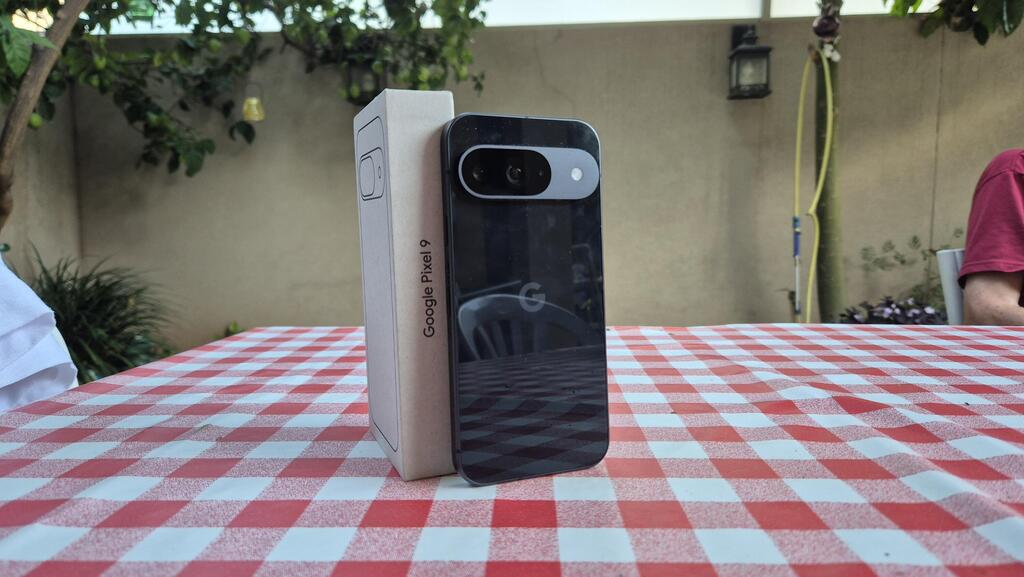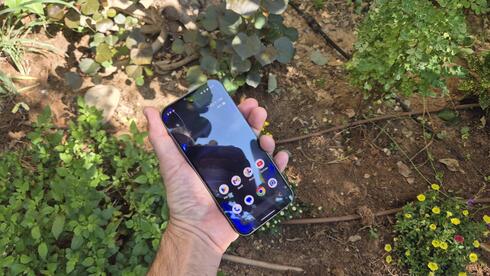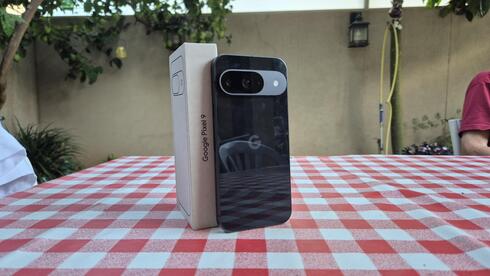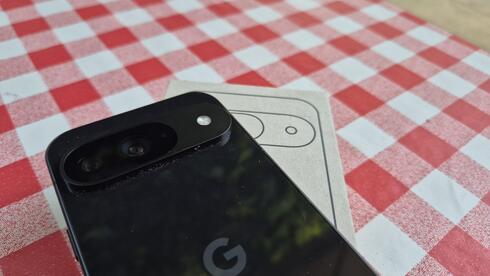
Smartphone review
Pixel 9 harnesses the power of AI, but is it enough to compete?
While the AI assistant Gemini impresses, the Pixel 9 faces competition with limited hardware updates.
Top Line
The Pixel 9 does not offer significant innovation in terms of appearance or hardware compared to its predecessor, and in this area, it doesn’t particularly stand out against the competition. The cameras are good but not exceptional, the battery capacity is below what has become the standard even in more affordable devices, and the maximum storage capacity is 256 gigabytes—relatively low, considering many mid-range models now offer double that.
However, when it comes to software, the Pixel 9 showcases Google's latest AI innovations, from new features in the photos and camera apps to the introduction of its smart assistant. Another advantage is the issue of updates—Pixel devices are the first to receive Android updates, and Google promises seven years of support for these updates.
The price of around $1,000 for the 256 GB Pro version puts it in direct competition with flagship devices from leading manufacturers. While the Pixel 9 has several strengths and advantages, they may not be enough to make it the top choice over other devices on the market.
Details
The Pixel 9 from Google has cemented its place as a smartphone designed for the era of artificial intelligence (AI). With the device launched in the summer, Google emphasized AI-driven features rather than hardware innovations, which has become a growing trend in the smartphone market. Unlike its competitors, Google’s approach with the Pixel 9 focuses more on integrating new smart features, while leaving hardware updates largely unchanged.
Pixel devices offer a "clean" Android experience, meaning users interact with the base interface developed by Google without the extra layers of customization common in other smartphones. Although the hardware and design don't present groundbreaking changes, the software is where Google shines—especially with its AI enhancements. New features often debut on Pixel devices before rolling out to other Android phones, and the Pixel 9 is no exception, introducing a variety of smart innovations.
Structure and design: Familiar yet functional
The Pixel 9 sticks closely to the design formula of its predecessors but offers a slightly larger 6.3-inch screen, up from 6.2 inches on the Pixel 8. It is also heavier by about 10 grams, giving it a more substantial feel in the hand. The phone features a flat display with rounded corners, and the prominent camera strip on the back ensures the phone doesn't wobble when placed on a table.
However, the location of the camera bump poses a slight inconvenience when the phone is held horizontally, such as during gaming, as it is placed near the edge of the device. The control buttons are all on the right side of the phone, with the power button positioned at the top and the volume buttons below it. This arrangement feels slightly counterintuitive, as many devices have the power button placed lower, which caused occasional mix-ups when attempting to turn off the screen.
One standout feature is the activation button, which doubles as a shortcut for launching the camera with a double press or the AI-powered smart assistant with a long press.
Hardware: Incremental upgrades
The Pixel 9 is powered by Google’s Tensor G4 processor, with upgraded memory from 8GB to 12GB, and comes with storage options of 128GB or 256GB. While some competitors start at 256GB, Google has yet to make this standard. As with many modern smartphones, the Pixel 9 does not include a memory card slot or a headphone jack.
In terms of performance, the Pixel 9 handles everyday tasks with ease, and even gaming does not cause the device to overheat. The display is bright enough to be used comfortably even in direct sunlight.
The battery has been slightly upgraded to 4,700 mAh, providing enough power to last a full day on a single charge. With a fast 65-watt charger, the battery can charge from 15% to 50% in half an hour and reach a full charge in about an hour and a half.
Software and interface: AI at the forefront
The Pixel 9 runs on Android 14, featuring Google's signature "clean" Android interface. Google has committed to providing system updates for seven years, which ensures the device stays relevant longer than many competitors.
The new star of the Pixel 9 is Google’s AI assistant, Gemini Live, which replaces the older Google Assistant. Gemini is more discreet, only making its presence known when activated. It supports voice commands, typed queries, and even image-based searches, although none of these features work in Hebrew yet.
Gemini can provide detailed information about what is on the screen, including summarizing articles or identifying plants in images. However, like many AI systems, it isn’t perfect. For example, when asked about the age of Hezbollah leader Hassan Nasrallah, it provided incorrect information, illustrating the limitations of AI accuracy.
In addition, Gemini includes an image generation feature similar to other AI tools, although it does not yet support creating images that include people—a limitation that will reportedly be addressed soon.
Related articles:
Camera: Quality over quantity
The Pixel 9 is equipped with two rear cameras—one with a 50-megapixel sensor and another with a 48-megapixel sensor—and a 10.5-megapixel selfie camera. The two lenses are more than adequate for producing vibrant, high-quality images, although the optical zoom is limited to just 2x.
Night photography is another area where the Pixel 9 excels. After the device processes the images, they often appear as though they were taken in daylight, even when captured in low-light conditions.
One notable AI-powered feature allows users to add people to photos. For example, if you are taking a group photo and want to include the photographer in the shot, the device can combine two separate images to create a group photo.


